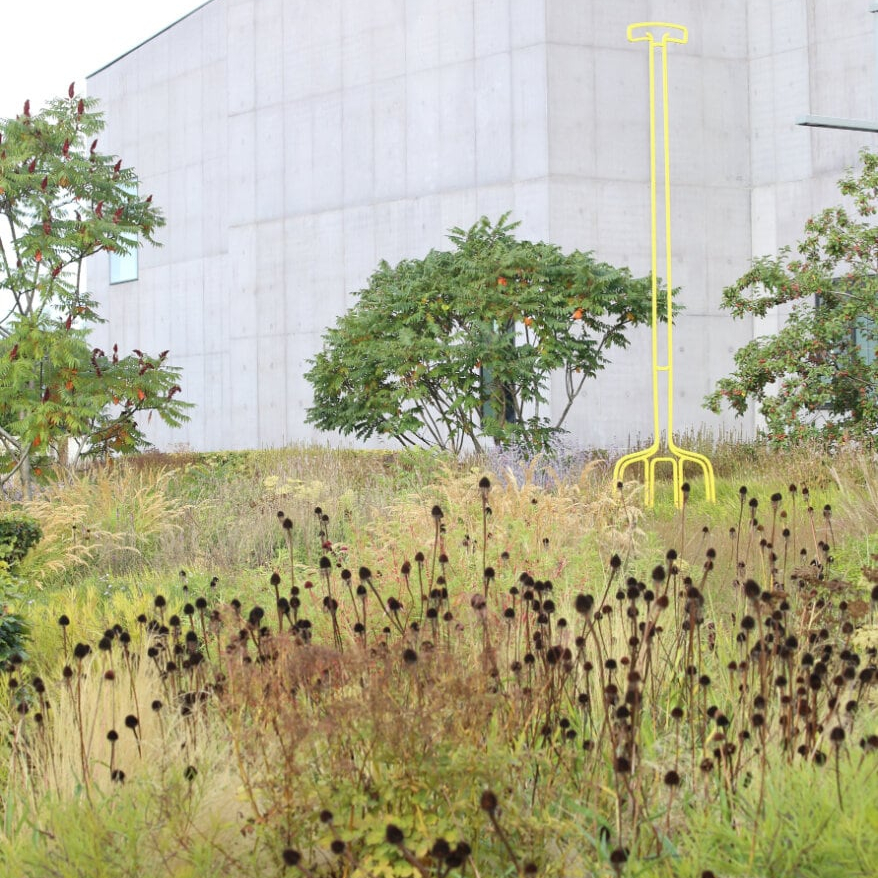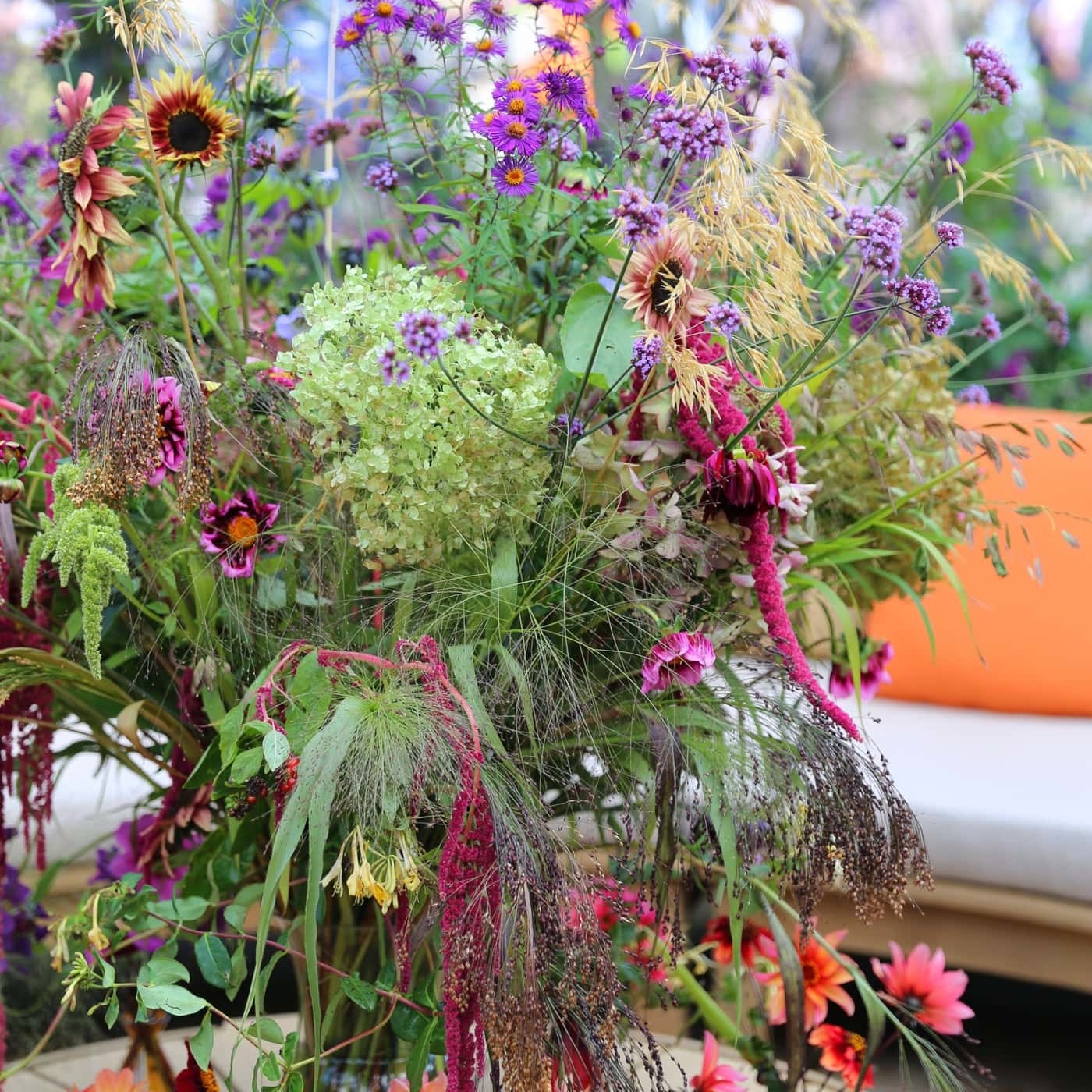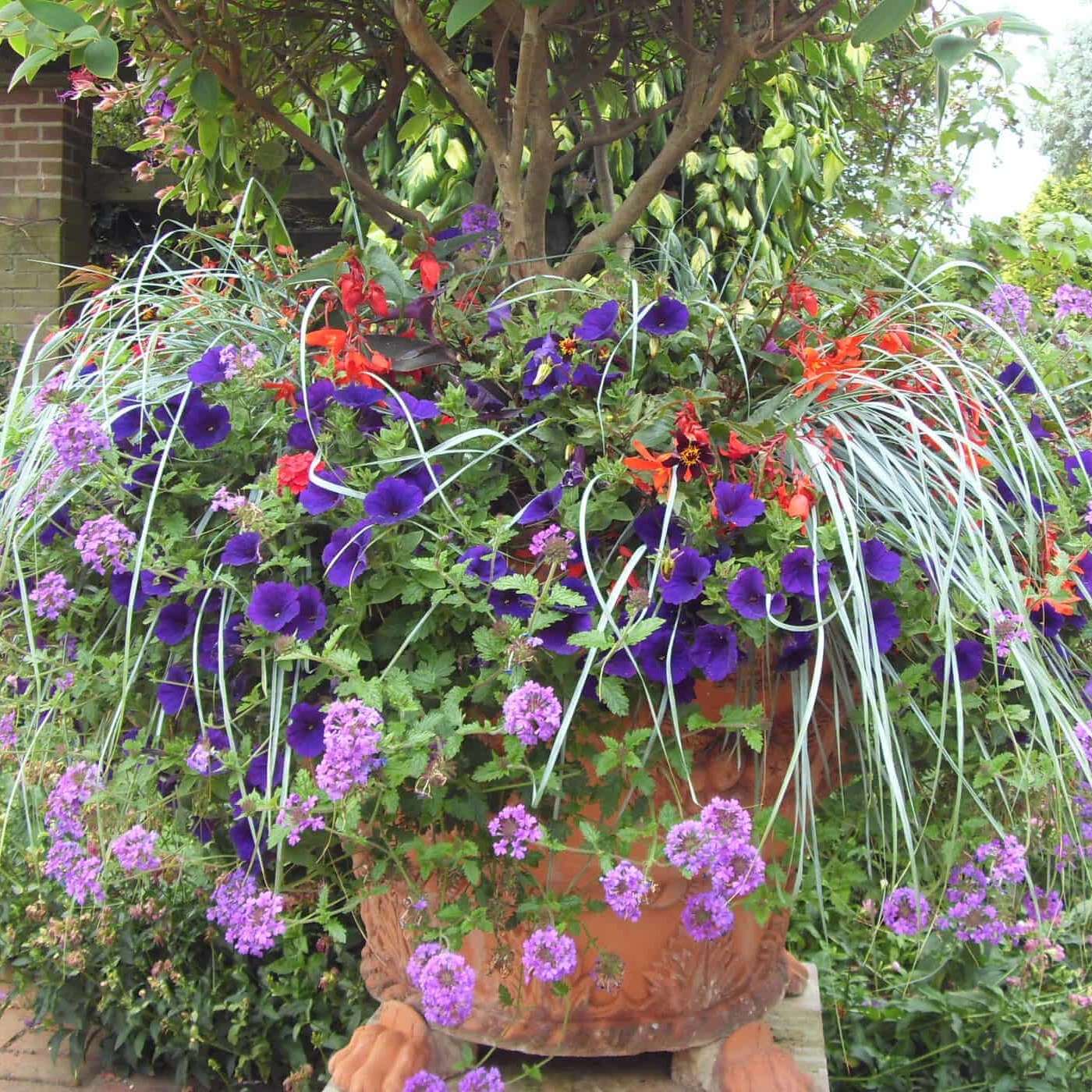In a pot or in the ground? Part 1: The problem with pots and why lifting slabs may be the answer
In this blog, we consider why gardening in pots is on the rise, what are the benefits and pitfalls. We will then explore why people don’t think to plant in the ground, and explore why this may often be a better option. In part 2, we explore how to find or create planting pockets in the ground in paved-over areas. And then finally, part 3 covers how to create long-term resilient and low-maintenance perennial container gardens.
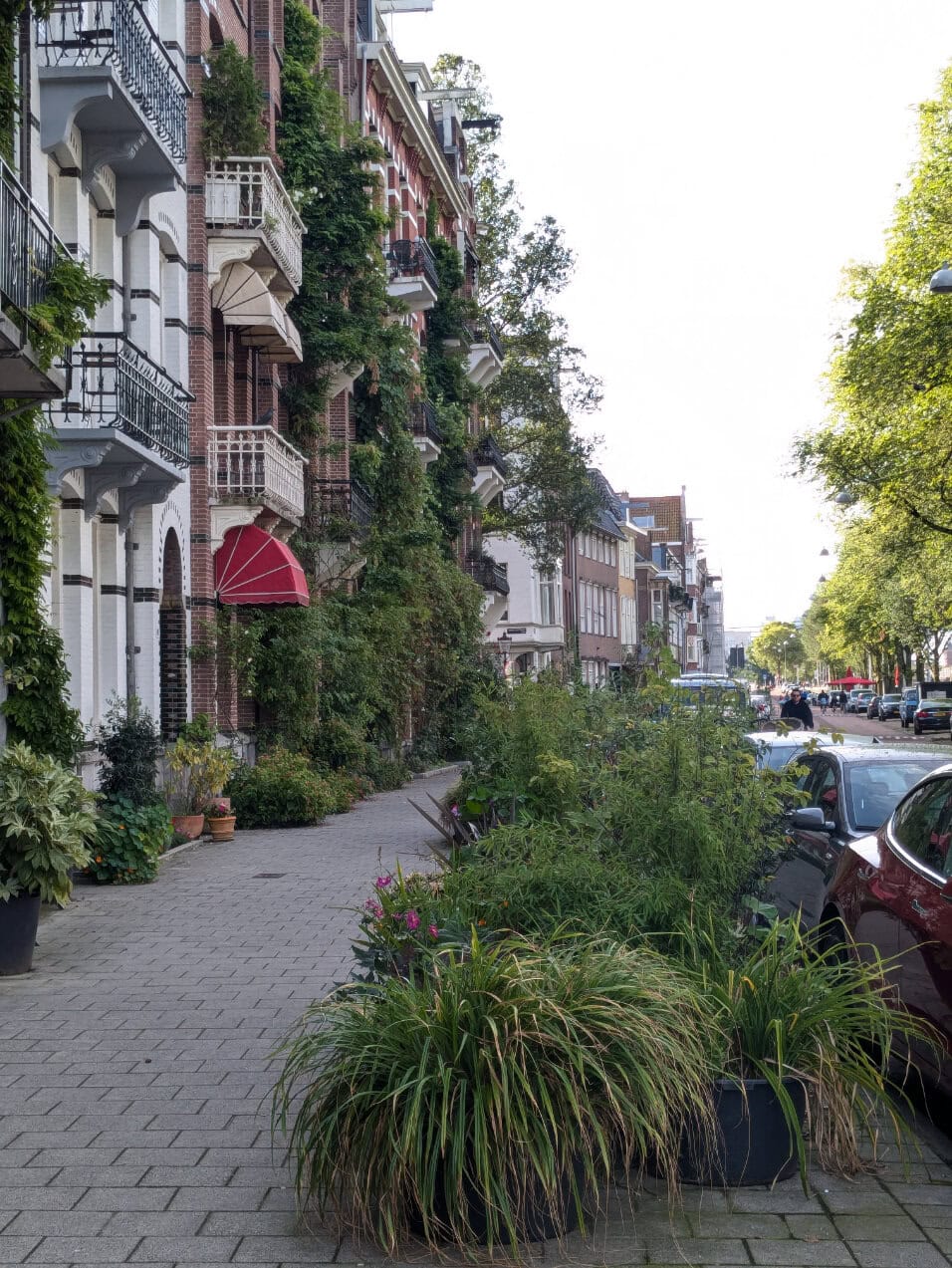
I was in Amsterdam for a few days recently, and what struck me was how they squeeze big plants into the narrowest of spaces and find planting opportunities almost anywhere. Sometimes these are big containers on the pavement, or plants growing in narrow beds at the foot of buildings, or even wisteria planted in the tiniest of pavement cracks and trained up the front of a house or even a lamppost. Gardening in pots was seen too, usually with big containers and evident commitment to watering.
Gardening in pots… on the rise
Like city streets, many of us have gardens or outdoor spaces that are largely or completely paved over. The rise of container gardening is, in part, a response to the fact that many people don’t have access to the soil beneath their outdoor space. The main other reason is likely the increasing number of people living in rented or temporary accommodation.
As a result, pots, tubs, containers and hanging baskets seem the only practical option. In recent years there’s been a huge rise in books, social media influencers, and products all aimed at the growing number of people making gardens almost entirely in containers. Garden centres partly like it because not only do people buy a plant they like, they also pick up a bag of compost, an often fairly pricey pot, and maybe some gravel to top it off with. Container gardening also appeals to a much wider demographic.
Why do we love gardening in pots?
They also offer a host of other advantages. For example, pots make moveable displays that can be rearranged seasonally, or brought into different conditions through the year or indoors over winter if needed. There is more control over drainage, soil conditions, water and nutrients. This is especially helpful for cacti, succulents, or tough mediterranean bedding like pelargoniums that need to spend winter away from rain and frost. For people living in rented or temporary accommodation, being able to up sticks and take pots in the removal van is also helpful. On balconies or roof gardens pots are often the only option too. Pots and containers can also be beautiful sculptural features in themselves.
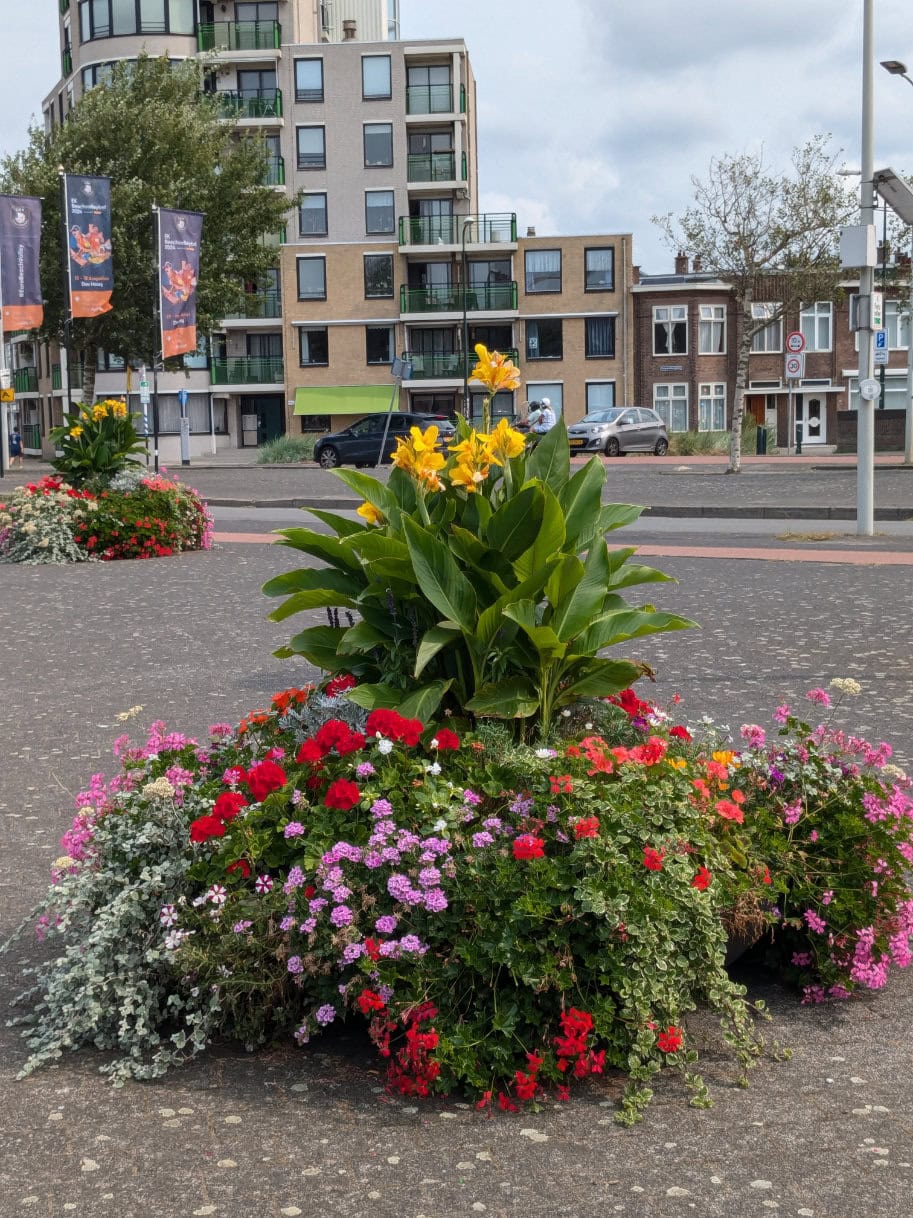
Gardening in pots… what could go wrong?
However, a poorly designed container garden, without the right planning and considerations in place, presents a few fairly large problems. They are both very demanding, and very unforgiving. Probably the worst combination of traits. They need constant, consistent, timely care. This is mostly watering, feeding, and repotting. A container display that is needier than the care level available for it, leads to a perennially lack-lustre display, verging on miserable. Total lack of care, even just for a few weeks at the wrong time of year, could cause widespread plant losses.
An example of this would be living green walls that depend on irrigation systems; a break in the system and the whole wall can be crispy bacon in jus a few weeks. What was supposed to be a long-lived low-maintenance display of flowers and foliage offering beauty and serenity, has the risk of having the opposite effect, and at quite an expense.
Natural soil vs bagged compost
To some extent I also wonder if there is some disconnect between people and soil, with soil or ‘dirt’ as they say in the US, being an intimidating natural entity riddled with unknowns. It could be waterlogged, stoney, hard, dry, wet, sticky, dusty, full of weeds, full of roots… the list of things to get to grips with is fairly lengthy.
Many people have a narrow view of what soil is, thinking of a dark rich crumbly loam they may have seen in posh gardens, rich in organic matter thanks to years of horse manure or wood-chip mulches. Something I often hear clients say is “we don’t really have soil… it’s just full of rubble” or “it’s just grey sticky clay, it’s not really soil”. Truth is, soil is a very broad term and if you choose the right plants you can grow in almost anything. Plants will grow in almost pure sand, or pure clay, rubble, and everything in between.
Meanwhile potting compost comes in plump glossy branded bags from a garden centre. Their marketing and branding offer reassuring claims of big blooms and water retention. So bagged compost offers a sense of reassurance and simplicity, unlike the vast diversity of natural soils.
Paved over gardens; are pots the only option?
There’s also the issue of the paved, concreted or tarmaced-over garden. Or even just large expanses of gravel, often on a weed-proof fabric. They look permanent, geological, like they’ve always been there and always will. What lies beneath is usually a mystery, it often doesn’t occur to us to think there may even be soil there. And the thought of lifting, paving or cutting through the concrete creating planting pockets is something most people would never think of, or would assume to be too difficult and destructive. But just by looking at how wild plants and tree saplings grow in the cracks, it’s clear these places are able to sustain life. Anyone who has ever pulled up a patio or had one built, will know that actually there is soil not too far beneath the surface.
So if pots are generally high-maintenance, fickle and unforgiving, what are the benefits to planting in the ground? And do the benefits justify the efforts needed to create planting areas in a paved-over garden?
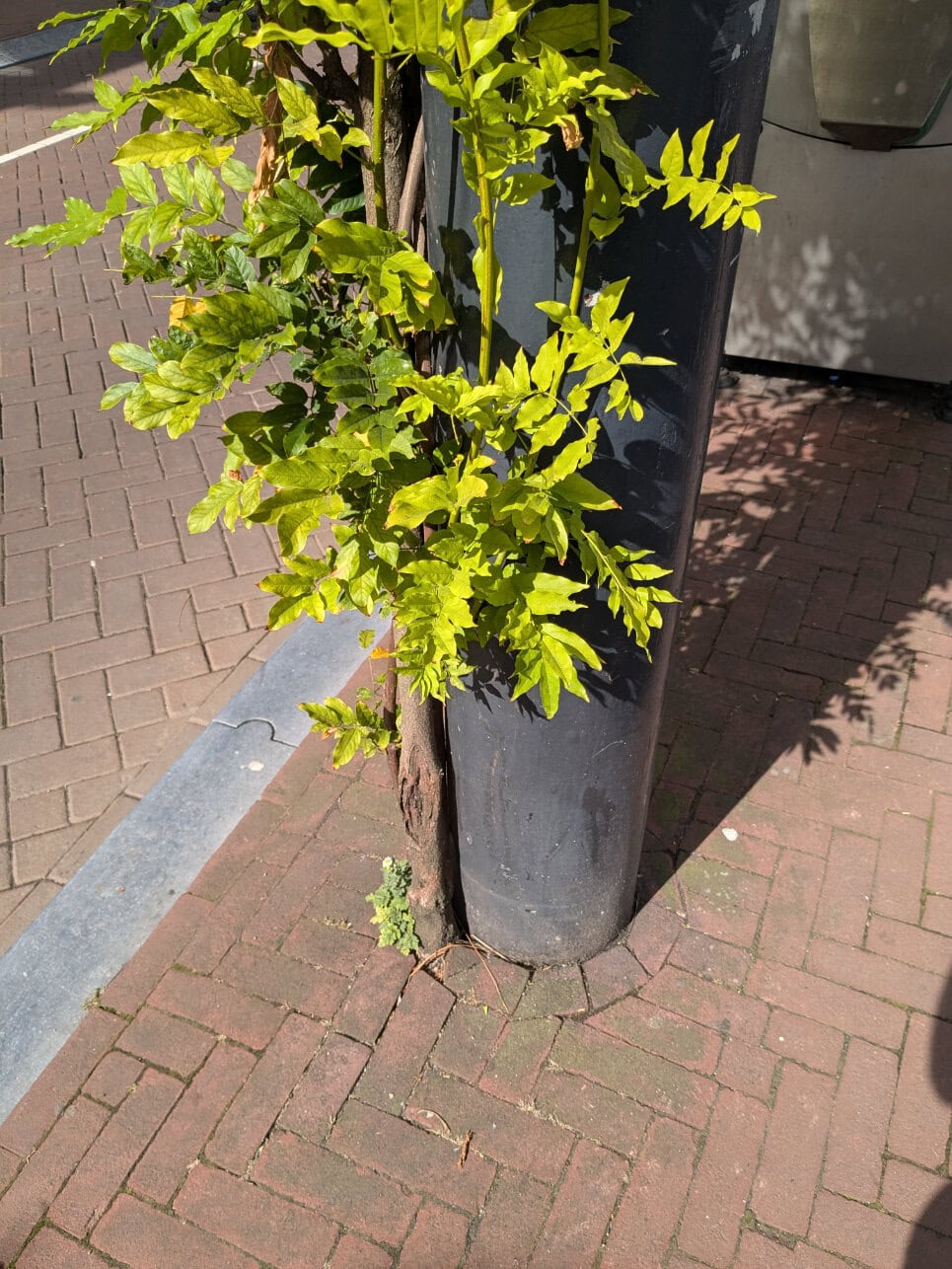
What does ground-planting offer us?
There’s a simple way to look at this. With container gardens, they are mostly demanding of your care to keep them alive. With plants in the ground, once they’ve been planted and established, if they do require your attention, it’s usually to prune them back or tidy them up a bit. Well-chosen long-lived hardy perennials, shrubs and trees, will live on for years in the ground, taking on a life of their own, even in the face of complete neglect. With a deep root-run, plants access water and nutrients from across the soil profile, probably never needing to be watered after their first summer.
In natural soils, plant roots enter into mutually beneficial symbiotic relationships with fungi and bacteria in the soil. These microbes evolved with plants since their earliest arrival on land, and are shown to greatly increase plant resistance to stress like drought and diseases. Getting their roots down, also means more stable plants, unlike pots that fall over in the wind. In the summer, the ground is cooler than the air, helping prevent desiccation from drought. Meanwhile, in winter, the soil is warmer than the air, so roots rarely freeze.
Effortlessly happy plants
With roots in the soil and year-round access to water and nutrients from mother earth, plants in the ground give so much back with so little effort on our part. They can be much bigger, think trees, shrubs and climbers. If you have a fence to cover, want a climber up a big bare wall, or want to create shade over a seating area, the right plants in the ground will do that for decades to come. If you want an apple tree covered in apples, or a rose bush covered in blooms, plants in the ground will tend to be productive even when neglected. The ground is also a great place for self-seeding and the natural spread of plants. Wild strawberries will run along the surface and root into cracks, and poppies can find a home in crevices.
Most plants evolved growing in the ground, and that’s where they’re happiest. They give us back so much more than we give them, even when life gets busy, many plants thrive on total neglect. There’s clearly lots of reasons, that people either can not, or feel they can not, plant in the ground. We all want to create resilient, beautiful planted spaces, be that in the ground, or in pots. So over the next two blogs, we’ll explore how to do that.
Owen Hayman
Owen joined the Bestall & Co planting and aftercare team in spring 2019. He is an RHS qualified horticulturist, holding a full Level 3 Diploma in Horticulture, and recently came in the top 3 at the Northern Regional Final of The Young Horticulturist of the Year 2019. After first doing a foundation diploma in Fine Art, he went on to gain a degree and masters in Plant and Soil Science from the University of Sheffield in 2014. Owen worked as a researcher on various field research projects in Alaska, Panama and Borneo. When not away in the field, he became obsessed with visiting gardens and nurseries across the British Isles and the Netherlands, developing his own garden, and then taking on a walled allotment garden as a personal project. He realised his true passion was in horticulture, and so moved away from academia and into the world of specialist plant nurseries and professional gardening.
Owen is now studying the Wisley Diploma, but continues to write articles for us on a monthly basis, and we're delighted to maintain contact with such a passionate and knowledgable plantsman.

